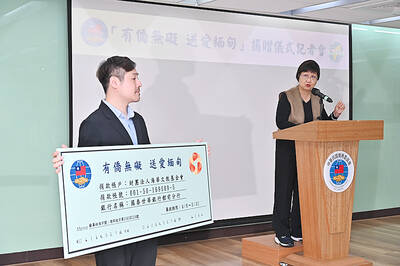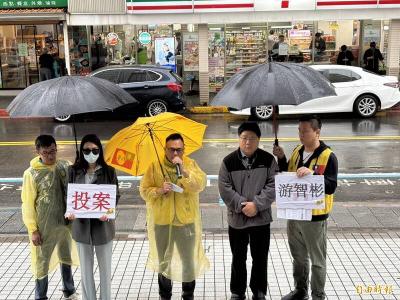President Ma Ying-jeou’s (馬英九) vision of a “golden aviation circle in Northeast Asia” is one step closer to reality as direct flights between Taipei International Airport (Songshan) and Gimpo Airport in Seoul, South Korea, are set to debut today.
China Airlines will operate the first flight from Taiwan on the route. It is scheduled to depart at 9:25am today. From Gimpo, a flight operated by South Korea’s T’way Airlines will leave at 11am. Both carriers will use Boeing 737-800 aircraft.
Until now, travelers heading to downtown Seoul needed to spend an extra hour on the road after they arrive at Incheon International Airport, the main international airport in Seoul. Traveling time will be reduced by 20 to 30 minutes if they land at Gimpo Airport.

Photo: CNA
Ma’s vision, announced while campaigning for the 2008 presidential election, also called for direct flights from Songshan to Shanghai Hongqiao Airport as well as to Tokyo Haneda Airport. Like Gimpo, Hongqiao and Haneda are closer to the centers of Shanghai and Tokyo when compared with the main airports in those cities.
Flights to Hongqiao began in June 2010 and to Haneda four months later.
Taiwan and South Korea did not reach an agreement on the Songshan-Gimpo route until last year. Both sides agreed to two flights per day at the initial stage of the route’s operation.
Civil Aeronautics Administration (CAA) Director-General Yin Cheng-pong (尹承蓬) said Taiwan and South Korea also agreed to talk about raising the number of Songshan-Gimpo flights at the end of this year.
Some carriers have asked the CAA to increase direct flights to Hongqiao because demand has already outpaced supply.

DEFENSE: The National Security Bureau promised to expand communication and intelligence cooperation with global partners and enhance its strategic analytical skills China has not only increased military exercises and “gray zone” tactics against Taiwan this year, but also continues to recruit military personnel for espionage, the National Security Bureau (NSB) said yesterday in a report to the Legislative Yuan. The bureau submitted the report ahead of NSB Director-General Tsai Ming-yen’s (蔡明彥) appearance before the Foreign and National Defense Committee today. Last year, the Chinese People’s Liberation Army (PLA) conducted “Joint Sword-2024A and B” military exercises targeting Taiwan and carried out 40 combat readiness patrols, the bureau said. In addition, Chinese military aircraft entered Taiwan’s airspace 3,070 times last year, up about

A magnitude 4.3 earthquake struck eastern Taiwan's Hualien County at 8:31am today, according to the Central Weather Administration (CWA). The epicenter of the temblor was located in Hualien County, about 70.3 kilometers south southwest of Hualien County Hall, at a depth of 23.2km, according to the administration. There were no immediate reports of damage resulting from the quake. The earthquake's intensity, which gauges the actual effect of a temblor, was highest in Taitung County, where it measured 3 on Taiwan's 7-tier intensity scale. The quake also measured an intensity of 2 in Hualien and Nantou counties, the CWA said.

The Overseas Community Affairs Council (OCAC) yesterday announced a fundraising campaign to support survivors of the magnitude 7.7 earthquake that struck Myanmar on March 28, with two prayer events scheduled in Taipei and Taichung later this week. “While initial rescue operations have concluded [in Myanmar], many survivors are now facing increasingly difficult living conditions,” OCAC Minister Hsu Chia-ching (徐佳青) told a news conference in Taipei. The fundraising campaign, which runs through May 31, is focused on supporting the reconstruction of damaged overseas compatriot schools, assisting students from Myanmar in Taiwan, and providing essential items, such as drinking water, food and medical supplies,

New Party Deputy Secretary-General You Chih-pin (游智彬) this morning went to the National Immigration Agency (NIA) to “turn himself in” after being notified that he had failed to provide proof of having renounced his Chinese household registration. He was one of more than 10,000 naturalized Taiwanese citizens from China who were informed by the NIA that their Taiwanese citizenship might be revoked if they fail to provide the proof in three months, people familiar with the matter said. You said he has proof that he had renounced his Chinese household registration and demanded the NIA provide proof that he still had Chinese